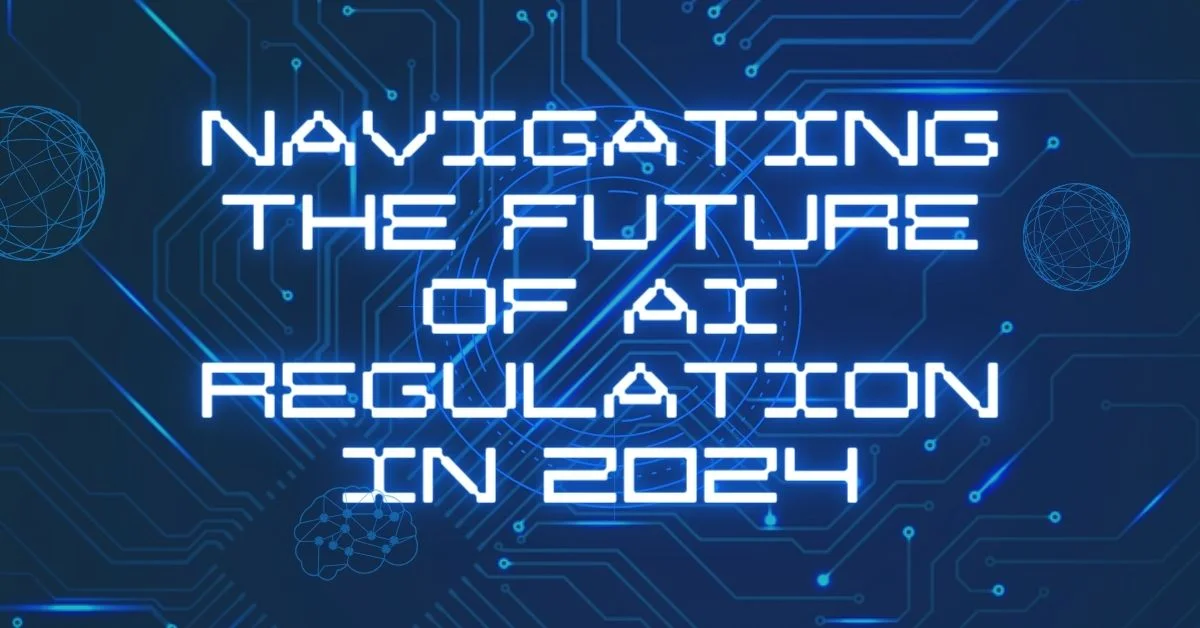As Artificial Intelligence (AI) continues its rapid evolution and integration into various facets of society, the imperative for robust regulation and governance becomes increasingly paramount. The year 2024 is expected to witness significant advancements and discussions in AI regulation, aiming to address ethical concerns, promote accountability, and foster innovation in a rapidly changing landscape.
1. Strengthening Ethical Guidelines:
Ethical considerations will remain at the forefront of AI regulation discussions. Efforts to establish comprehensive ethical frameworks governing AI development and deployment are anticipated. These frameworks will focus on ensuring fairness, transparency, and accountability in AI systems, addressing concerns related to bias, data privacy, and the ethical implications of AI-driven decision-making.
2. International Collaboration and Standardization:
Collaborative efforts among nations to establish common standards and guidelines for AI are likely to gain momentum. Initiatives aimed at harmonizing regulations across borders will facilitate international cooperation, foster innovation, and ensure consistency in ethical AI practices. Establishing global benchmarks for AI regulation will be crucial in navigating the complexities of a globally interconnected AI ecosystem.

3. Sector-Specific Regulations:
2024 might witness the development of sector-specific regulations tailored to address the unique challenges and opportunities presented by AI in various industries. Sectors like healthcare, finance, autonomous vehicles, and cybersecurity may see specialized guidelines to govern the responsible deployment of AI technologies, ensuring safety, reliability, and adherence to industry-specific standards.
4. Focus on Responsible AI Deployment:
Regulations will increasingly emphasize the responsible deployment of AI systems. Guidelines requiring companies and developers to conduct thorough risk assessments, ensure explainability and transparency in AI decision-making, and implement measures for bias detection and mitigation will be prioritized. The focus will be on building trust and confidence in AI systems.
5. Regulatory Sandboxes and Innovation Hubs:
Governments and regulatory bodies may create regulatory sandboxes and innovation hubs to foster a conducive environment for AI experimentation and innovation. These initiatives will provide a space for startups and organizations to test AI applications, collaborate on solutions, and work closely with regulators to ensure compliance while encouraging innovation.
6. Data Governance and Privacy Regulations:
The protection of data privacy will continue to be a significant aspect of AI regulation. Stricter regulations surrounding data collection, storage, and usage will be formulated to safeguard individual privacy rights. Measures to ensure informed consent, data anonymization, and robust cybersecurity practices will be central to AI-related data governance.
7. AI Ethics Boards and Oversight Committees:
The establishment of AI ethics boards or oversight committees could emerge as a proactive approach to monitor AI developments. Comprising multidisciplinary experts, these bodies would provide guidance, evaluate ethical implications, and offer recommendations for AI policies and regulations.
8. Public Engagement and Stakeholder Involvement:
Efforts to involve the public and stakeholders in shaping AI regulations will gain significance. Public consultations, forums, and engagement initiatives will seek input from diverse communities, academia, industry experts, and civil society to ensure that regulations reflect societal values and aspirations.
9. AI Liability and Accountability Frameworks:
The issue of liability in AI systems will garner increased attention in regulatory discussions. Frameworks to determine liability for AI-related incidents, accidents, or failures may be devised. Clarity on responsibility and accountability, especially in scenarios involving autonomous systems, will be essential to ensure fairness and appropriate compensation in case of adverse events.
10. Regulatory Adaptation to Rapid Technological Advancements:
The agility of regulatory bodies to adapt to the rapid pace of technological advancements in AI will be crucial. Flexible regulatory frameworks that can accommodate and evolve with emerging AI capabilities, such as advancements in machine learning, quantum computing, or AI in edge computing, will be vital to prevent regulatory bottlenecks.
11. Transparency Requirements for AI Systems:
Regulations may mandate increased transparency in AI systems’ decision-making processes. Requirements for providing explanations or justifications for AI-driven decisions, particularly in high-stakes applications like finance, healthcare, and justice, will be emphasized. Transparent AI systems can enhance trust and facilitate better understanding and scrutiny of outcomes.
12. Regulatory Sandboxes for AI Experimentation:
Regulatory sandboxes tailored specifically for AI experimentation and innovation will likely witness widespread adoption. These controlled environments allow for testing and validating AI applications while ensuring compliance with regulations. This approach fosters innovation without compromising regulatory standards.
13. Emphasis on AI Governance within Organizations:
Regulatory frameworks may push organizations to establish internal AI governance structures. Requirements for clear policies, oversight mechanisms, and dedicated teams responsible for AI ethics, compliance, and risk management will become more prevalent. This internal governance ensures alignment with external regulations and ethical standards.

14. Collaboration with Tech Industry for Self-Regulation:
Collaborative efforts between regulatory bodies and the tech industry to establish self-regulatory mechanisms may gain traction. Codes of conduct, industry standards, and voluntary compliance initiatives promoted by tech companies could complement formal regulations, ensuring responsible AI development and deployment.
15. Continuous Learning and Adaptive Regulations:
Regulators are likely to adopt an iterative and adaptive approach to AI regulations. Continuous learning from AI deployments, feedback mechanisms, and monitoring systems will inform regulatory updates. The aim will be to strike a balance between fostering innovation and mitigating potential risks associated with AI technologies.
Conclusion:
In 2024, the evolution of AI regulation signifies a dynamic interplay between technological advancements, ethical considerations, and regulatory frameworks. The focus on transparency, accountability, and adaptability in regulations will be pivotal in ensuring that AI contributes positively to society while minimizing potential risks. Collaboration between policymakers, industry stakeholders, academia, and the public will remain instrumental in shaping a regulatory landscape that promotes responsible and ethical AI innovation.
Conclusion:
The year 2024 represents a pivotal moment in the trajectory of AI regulation. The evolving landscape demands a proactive and collaborative approach to address the ethical, legal, and societal implications of AI. Balancing innovation with responsible deployment, fostering international cooperation, and ensuring the protection of individual rights will be central to crafting comprehensive AI regulations that promote trust, accountability, and ethical AI for the benefit of society as a whole.
This overview explores the potential developments in AI regulation for 2024, highlighting the focus on ethics, international collaboration, sector-specific regulations, responsible deployment, data privacy, and the involvement of stakeholders in shaping the regulatory landscape surrounding AI.










